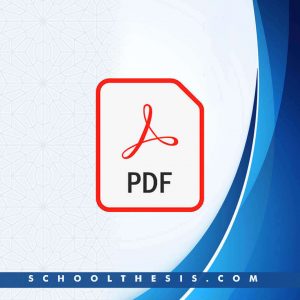Evaluation of Selected Agroallied Wastes as Carrier for Trichoderma Harzianum

Evaluation of Selected Agroallied Wastes as Carrier for Trichoderma Harzianum
Quick Navigation for Final Year Undergraduates, Masters (Thesis), and Ph.D. Dissertation Students Who Need Our Services on Their Research Works
| Find More Project Topics | FIND HERE |
| Hire Us for Thesis Works | HIRE NOW |
| Hire Us for Project Works | HIRE NOW |
| Hire Us for Seminar Works | HIRE NOW |
| Hire Us for Assignments | HIRE NOW |
| Hire Us for Proposals | HIRE NOW |
| Contact Us | HERE NOW |
Abstract on Evaluation of Selected Agroallied Wastes as Carrier for Trichoderma Harzianum
This study was carried out to estimate the effectiveness of agro-allied wastes as carriers of the biological control organism, T. harzianum, by evaluating colonization and sporulation rate of each. The selected substrates were corn husk, Alstonia and Iron wood. The substrates were supplemented with 5, 10, 15, and 20% of rice bran, and control treatment to show the improved rate of colonization. All substrate used proved to be effective. The slowest mycelia colonization rate was from the Iron wood with 50% at 10% rice supplement by day-5. Alstonia and cornhusk substrates at 10% proved to be the best with a fast percentage colonization of 77.5 and 85.5% by day-5. This result were analysed using one way ANOVA at 5% probability level using Student-Newman-Keul’s (SNK).
Chapter One of Evaluation of Selected Agroallied Wastes as Carrier for Trichoderma Harzianum
INTRODUCTION
Trichoderma a fungus belonging to the division Ascomycota (Imperfecti fungi) and to the family Hypocreales. They occur worldwide and are commonly associated with roots, soil and plant debris (Howell et al., 2003). They could survive on other host such as rotten tomatoes and cultures of sawdust when the environment is favourable (Apabalza et al., 2000).
They live in symbiotic relationship such as competitions, antibiosis and mycoparatism. Trichoderma species have a complex mycoparatism process where they secrete cell-wall degrading enzymes (Whipps, 2011). In the cell wall chitin which a polymer include endochitin, chitinolytic which degrade the cell wall and metabolism of organism (Goku et al., 2000).
Trichoderma is an important phytopathogen antagonist against some soil fungi and plant parasitic organism (nematodes). Different strains have being developed such as TH 36, TH16 and has been proved to be effective antagonist of conidia of Colletotrichum musae (banana rot) and Rhizoctonia solani causal organism of seedling wilt in many plant (Apabalza et al., 2000; Kerry, 2000 and Myer, 2001).
The use of bactericide and fungicides (e.g. Aldrex T) and use of chemical fertilizer in crop protection have being in use over the years; recently this form of crop protection are being discouraged due to its implication on the environment (Chanidallan and Eliot, 2009).
The use of biological control has been on the rise and emphasis are being placed on it due to the fact that it is environmentally friendly (Whipps, 2001).
Trichoderma has been found to produce and provide better protection for crops such as cowpea by colonizing the plant root (Adekunle et al., 2004) and effective in suppression of pathogens by competing for space, nutrients and secretion of diffusible antibiotics (Howell, 2003).
Trichoderma has been used as fungicide against foliar disease of crops and its effectiveness against damping off. As biocontrol they act indirectly or directly through their mechanism help improve environmental conditions, plant growth and induce systemic resistant. (Benitez, 2004).
Test conducted using various species of Trichoderma has shown them to be effective in seed treatment; Trichoderma konigii, Trichoderma harziaum and Trichoderma virivde used to treat seedling against soil borne disease like Marcophonmia phaseolina (Adeknule et al., 2000). Good and improved the resistance of tomatoes to Meloidogyne incognita when cultured in 1.5% tomatoes extracts (Dabbat AA et al., 2006).
The production of Trichoderma for use in the field would require fast growth resulting in large biomass. Availability of cheap substrate and energy source is of importance.
The objective of this study is to determine:
The suitability of selected agro allied waste as carrier for Trichoderma harzianum
The rate of colonization and sporulation in selected agro allied waste.
The effect of soil amendment on growth and yield of a selected vegetable – Celosia argentea.
Disclaimer
This research material is intended for academic use only and should be used as a guide in constructing your research project and seminar presentation. You should never duplicate the content word for word (verbatim), as SCHOOLTHESIS.COM will not be held liable for anyone who does.
The purpose of publishing this material is to alleviate the stress of hopping from one school library to the next in search of research materials. This service is lawful because all educational institutions allow students to read past projects, papers, books, and articles while working on their own.
SCHOOL THESIS is merely giving this information as a research reference. Use the document as a reference or structure for your own research paper. This paper’s content should be able to assist you in coming up with new ideas and thoughts for your own study
Evaluation of Selected Agroallied Wastes as Carrier for Trichoderma Harzianum
